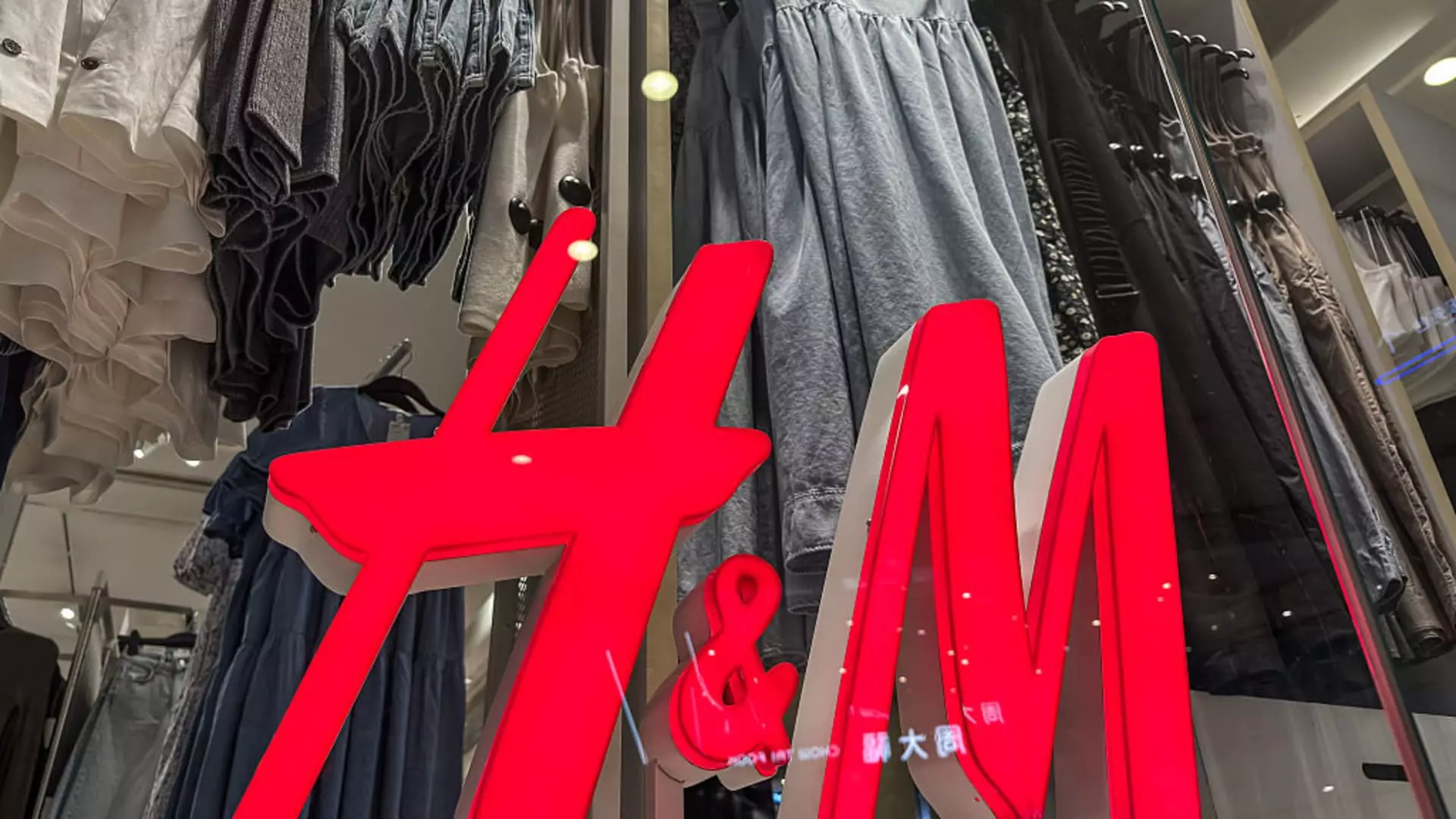H&M, the Swedish clothing behemoth, is encountering a paradoxical landscape in the retail sector. While a semblance of recovery is being noticed in demand as summer approaches, characterized by a reported 3% sales increase in June, the overarching sentiment remains one of caution. This juxtaposition paints a disconcerting picture for not only H&M but for the retail industry at large. With the shadows of consumer hesitance and economic uncertainty looming large, the company finds itself navigating turbulent waters that threaten to capsize even the most seasoned brands.
The increase in H&M’s stock value by nearly 4% signals a positive yet tenuous optimism among investors. Understanding this shift requires delving deeper into the consumer psyche in a post-pandemic world. Shoppers are not simply returning to stores; they are returning with a heightened sense of price sensitivity. This is not merely a shift in purchasing behavior; it reflects a broader consumer anxiety about economic stability, where discretionary spending is rationed and every dollar meticulously accounted for.
The Price of Adaptability
CEO Daniel Erver’s acknowledgment of consumer apprehension is telling. His remarks during the earnings call highlight a critical balancing act that retail giants such as H&M must perform: the need for competitive pricing while grappling with rising operational costs due to external factors like U.S. trade tariffs and the inflationary pressures driven by a depreciating currency. H&M’s dependence on production hubs such as China and Bangladesh adds another layer of complexity, reminding us how interconnected and vulnerable the global supply chain is to geopolitical tensions and economic fluctuations.
While the company “closely monitors developments” regarding tariffs, the proactive approach of considering price hikes feels like a double-edged sword. Raising prices could alienate already cautious consumers seeking bargains, while maintaining lower prices risks undermining profit margins. It’s a dance on a tightrope, with market share and profits swaying precariously in the balance. Ultimately, the competitive landscape of fast fashion is ruthless; the emergence of lower-cost alternatives like Shein and Temu has escalated the stakes, leaving H&M vulnerable to slipping further behind.
Reflections on Market Strategy
H&M’s fiscal second quarter results indicate a formidable challenge. A revenue drop to 56.71 billion Swedish krona ($5.99 billion), falling short of analyst expectations, underscores the ongoing crisis of confidence in the brand. Even as the company anticipates a positive turnaround, the cyclical forces that have historically buoyed sales seem to operate at a more measured pace now, which raises questions about the viability of H&M’s existing market strategy.
A notable point of concern is H&M’s plan to close 200 underperforming stores while simultaneously opening 80 new locations in growth markets. This strategy suggests an awareness of shifting consumer habits and preferences; however, it also highlights a deeper issue—H&M must reevaluate its market positioning in regions where it once thrived. Are the closures merely a reactive measure rather than a calculated, forward-thinking strategy? In the wake of ethical consumerism, fast fashion has faced intense scrutiny, prompting buyers to reconsider their affiliations with brands that have historically prioritized growth over sustainability.
The Road Ahead: A Call for Innovation
As H&M grapples with these challenges, the question remains whether they can become a proactive innovator rather than a reactive survivor. The need for a radical rethinking of product offerings, marketing strategies, and customer engagement is imperative. The fashion landscape is evolving, and H&M must evolve alongside it. The brand should leverage technology and data analytics not just to adjust pricing models but to better understand consumer trends and redefine the shopping experience itself.
Furthermore, the necessity of advancing sustainability efforts cannot be understated. In a time when consumers are increasingly aligned with brands that reflect their values—particularly those committing to ethical production and environmental responsibility—it’s time for H&M to step into the limelight as a leader rather than a laggard. Addressing rising operational costs through innovative practices, from sustainable sourcing to advanced logistics, can help H&M not just survive but thrive in an ever-demanding marketplace.
In this age of uncertainty, where the retail sector is beleaguered by a multitude of crises, H&M’s experience could serve as both a warning and a blueprint for adaptation. Failure to embrace change may not only jeopardize H&M’s future but could also offer a sobering lesson for other legacy retailers trying to find their footing in the new economy.

